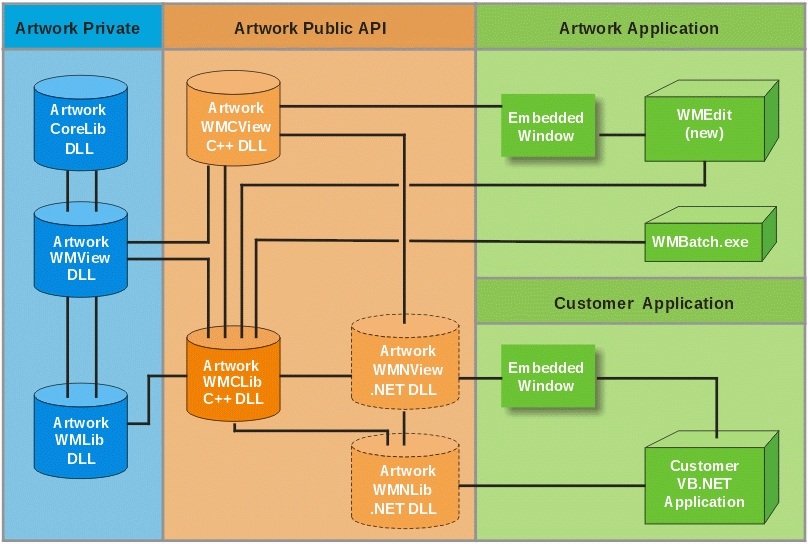

Artwork's third generation version of our wafer map converter and wafer map editor was written making extensive use of libraries with APIs. This makes it easier for us to maintain and enhance these programs. It also enables Artwork to offer OEMs a way to integrate wafer map conversion and wafer map viewing/editing into their own applications.
While the libraries are written in C++ we also created bridge libraries for OEM applications developed using VB.NET and C#. This allows an OEM to add realtime viewing to wafer probe and wafer inspection equipment. It also makes it simple to offer a number of different map file formats for import and export.

1. The three libraries on the left (blue) side of the diagram are Artwork's internal libraries which support the functions needed for wafer map importation, conversion, viewing and editing.
2.The center section (orange) are the API libraries. As we work in a C++ environment, the first ones we developed with a C++ API are used by our third generation applications. OEM customers can also use these libraries if they program in C++. Many potential users do not program in C++ but use either Visual Basic or C#. To support applications built using VB or C# we created so called "bridge" libraries that expose the API for those environments.
3a. The upper right section (green) shows how Artwork's latest software applications are clients working with the C++ API libraries.
3b. The lower right section (green) shows how an OEM using VB.NET would interface with the bridge libraries (.NET) to embed wafer map import/export/conversion and view/edit into their application.
Runtime
Windows 10 64 bit OS
.NET 4.7
Microsoft 2015 C++ Redistributables
Developer
Microsoft Visual Studio 2015 or higher
Libraries are 64 bit only
Click on this link to go to the release contents page.
This document describes the functionality of the WMLib and WMView API which can be licensed for customers to use in their own C++ and .NET applications.